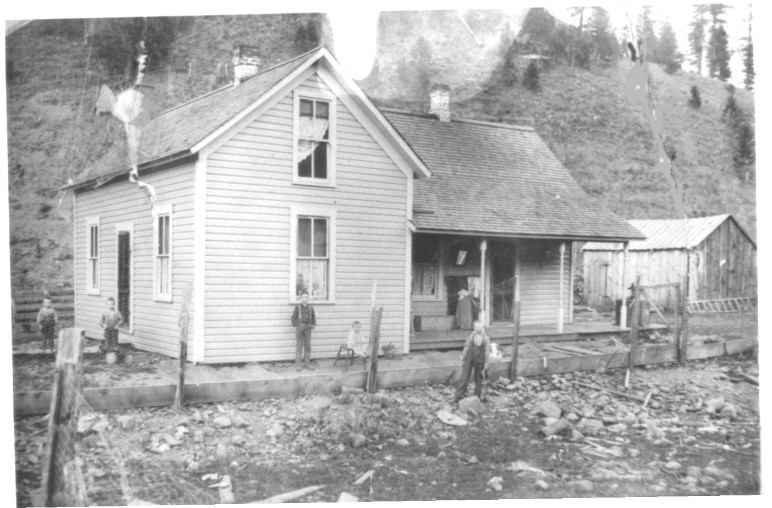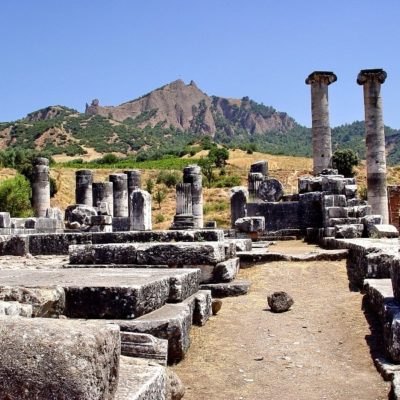Reformed Mennonite Church

The Reformed Mennonite Church is an Anabaptist religious denomination that officially separated from the main North American Mennonite body in 1812. While they are called Reformed Mennonites, their principles and beliefs trace back to the time of the Apostles and we believe there has been a continuity of these beliefs carried on from then until now by groups who often had to meet in secret due to religious persecution.
Menno Simons is considered to be the founder of the Mennonite Church. They were nicknamed “Mennists” and later “Mennonites.”
Reformed Mennonite Church are not a part or branch of any other organization. John Herr, who in 1812 helped to organize the group now known as Reformed Mennonites, did not establish a new church. It was under his leadership that a number of persons, who could not at that time find an organization which they felt sincerely carried out the teachings of the New Testament, were drawn together to worship, and subsequently organized into church fellowship.
Reformed Mennonites see themselves as true followers of Menno Simons’ teachings and of the teachings of the New Testament. They have no church rules, and rely solely on the Bible to guide them through life. The Reformed Mennonites practice nonresistance and therefore do not go to war, they do not even practice self-defense, or sue at the law.
They insist on strict separation from other denominations, and use excommunication and shunning of former members. Members dress in conservative plain dress. Their children attend public schools. They permit the use of automobiles.
History
The Reformed Mennonite Church was founded on May 30, 1812, in Lancaster County, Pennsylvania, under the leadership of John Herr. The father of John Herr, Francis Herr, a Mennonite who had been expelled from the church. The Herr’s split from the main Mennonite Church on the principle that the Church leaders were opposing the original teachings of Menno Simons. The new denomination retained the name “Mennonite” and identified itself as the only true Mennonite movement. This movement became the “Reformed” Mennonites, which eventually became the denomination’s official name. (Smith, 2013).
The Reformed Mennonite Church experienced two separations in its history. Three congregations located in Huron, Richland, and Lucas counties in Ohio (along with a few members in Ontario) formed the New Reformed Mennonite Church under the leadership of Minister John Miller in 1917. The cause for the split was disagreement over whether funerals should be held in cooperation with non-Reformed Mennonite ministers and over the Church’s support of the American Red Cross during the First World War. The second split occurred in 1975 under Minister Willis Weaver, who organized the United Mennonite Church in 1987. (Hartzler, 1905).
Belief:
Reformed Mennonite Church believes the doctrines and principles of love taught in the New Testament, and practiced by true Christians in all ages since the church was established on the day of Pentecost. Reformed Mennonite Church believes
They practice the Lord’s Supper and believer’s baptism on confession of faith. Upon meeting, members greet with a kiss of charity as taught in 1 Peter 5. They practice feet washing as taught by Christ in John 13.
Reformed Mennonite Church believes there is one body and one Spirit even as ye are called in one hope of your calling; One Lord, one faith, one baptism; One God and Father of all who is above all, and through all, and in you all.
Reformed Mennonite Church believes on strict separation from all other forms of worship and dress in conservative plain garb that preserves 18th century Mennonite details.
Reformed Mennonite Church believes they should condemn whatever God has declared to be a sin.
Reformed Mennonite Church believes on total obedience to Jesus Christ.
Reformed Mennonite Church believes baptism has been generally administered by regular ordained ministers of the church.
Reformed Mennonite Church believes no true believer would consent to receive either baptism or ordination at the hands of one who he did not believe was called.
Reformed Mennonite Church believes the church is God’s own institution. There are two specific purposes for the church. One is for the relationship of God and the spreading of the Gospel. Next is getting man to embrace the Gospel.
References:
Hartzler, J. S. and Daniel Kauffman. (1905). Mennonite Church History. Scottdale.
Smith, C. Henry, Harold S. Bender and Delbert L. Gratz. (June 2013). Reformed Mennonite Church. Global Anabaptist Mennonite Encyclopedia Online. Retrieved 6 September 2013, from http://gameo.org/index.php?title=Reformed_Mennonite_Church&oldid=100354.
Official Website can be found: http://www.reformedmennonite.org/
Cite Article Source
MLA Style Citation:
Holstein, Joanne “Reformed Mennonite Church:.” Becker Bible Studies Library Sept 2013.< https://guidedbiblestudies.com/?p=2464,>.
APA Style Citation:
Holstein, Joanne (2013, September) “Reformed Mennonite Church:.” Becker Bible Studies Library. Retrieved from https://guidedbiblestudies.com/?p=2464,.
Chicago Style Citation:
Holstein, Joanne (2013) “Reformed Mennonite Church:.” Becker Bible Studies Library (September), https://guidedbiblestudies.com/?p=2464, (accessed).


